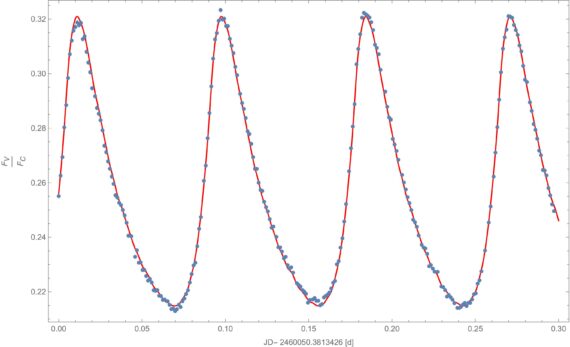Julius Debus & Lukas Hauf
As part of the advanced lab course of the department of physics of TU Darmstadt, on April 15, 2023 we observed the pulsating star V0417 Boo, which is part of the constellation Boötes. This particular star is of high interest and was chosen for the observation because it shows a very regular, periodic and significant variation in brightness.
But giving a meaningful measure for how bright an astronomical object is, is a more involved problem than one might think at first glance: Of course one can simply measure how bright a star is by pointing a telescope with a camera at it and evaluating the image at the position of the star.
But this measurement alone is meaningless for other observers, since it is influenced by the telescope and electronics one uses, as well as parameters as the weather or the observer’s position. In order to measure the brightness in a way that makes results comparable, reproducible, and to eliminate systematic errors, one measures the brightness relative to a reference i.e. a set of stars with very constant brightness.
Other observers are now able to compare their measurements by measuring the brightness of the object relative to the same reference stars. This method is called differential photometry.
Using this method with the TURMX telescope we were able to acquire data over 4 pulsation periods of the star. Using a Fourier series a continuous, periodic function was fitted into the data as it can be seen in the figure. From that we were able to determine the period P= (0.0866235 ± 0.0000268) d and the magnitude variation of (0.4414 ± 0.0045) mag of the pulsation. The fact that a star varies its brightness by over 33% at such a high frequency is very astonishing given the immense size of stars.


